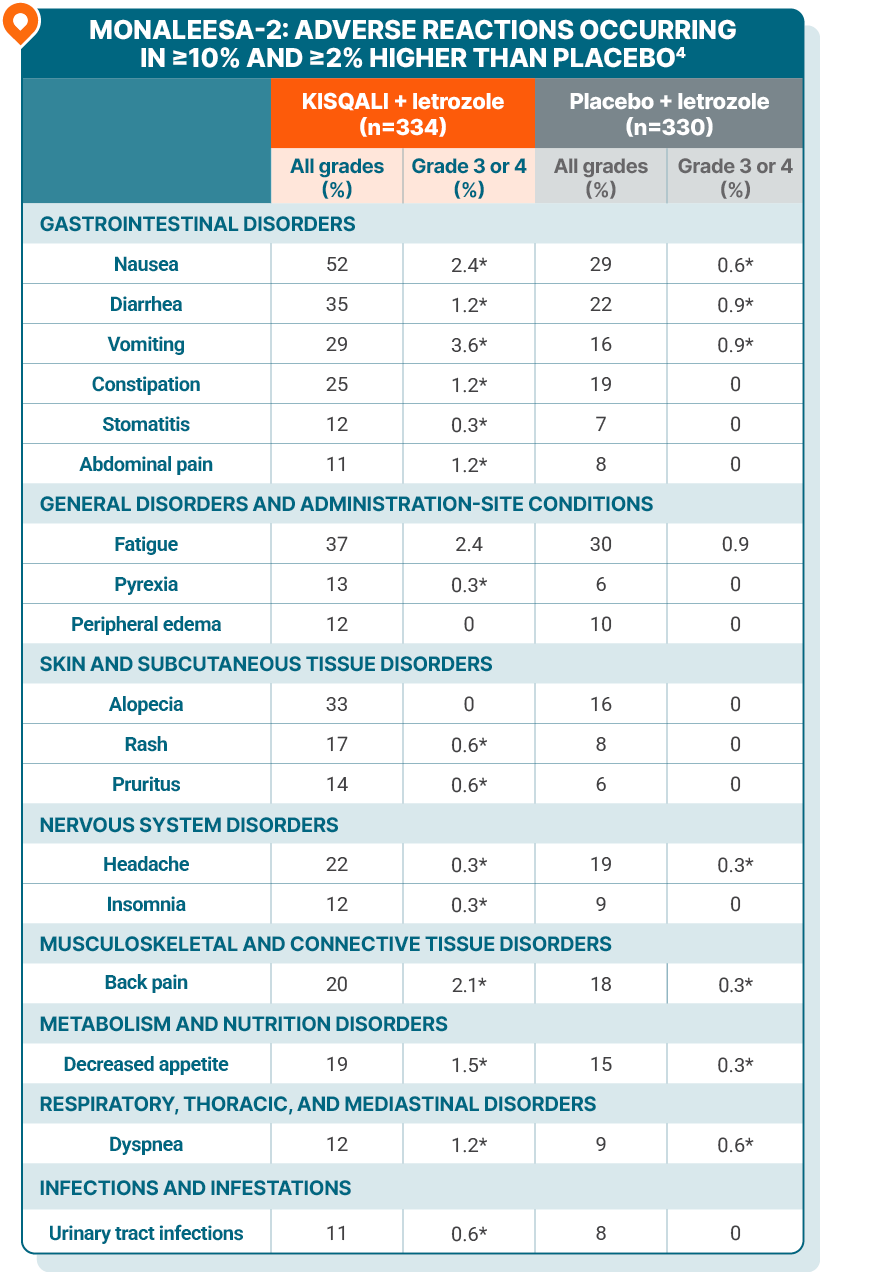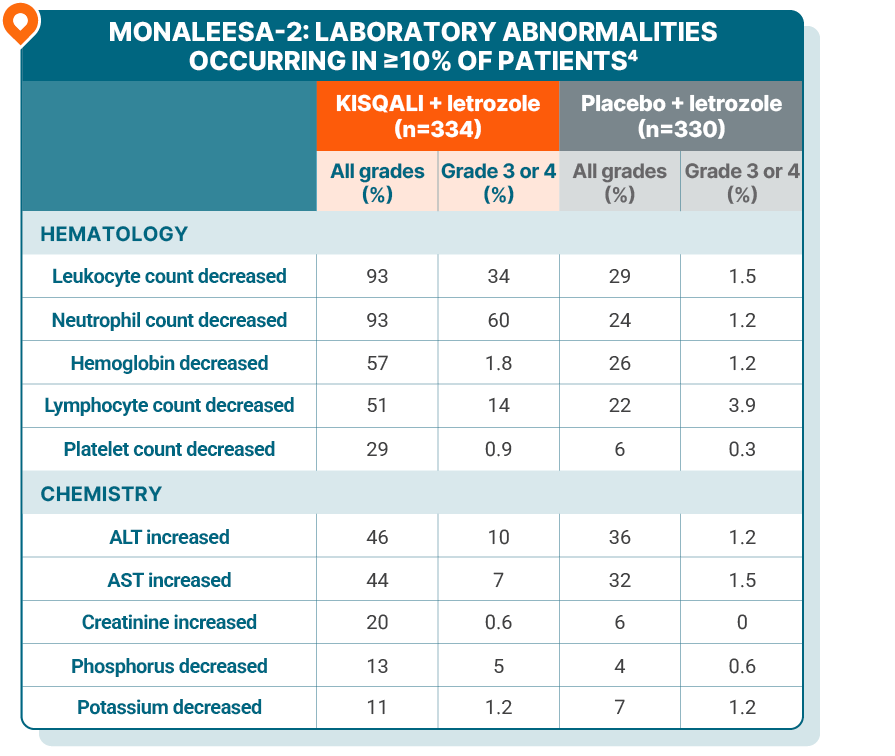
MONALEESA-2 safety profile
KISQALI + letrozole in 1L postmenopausal patients
ADVERSE REACTIONS
Majority of adverse reactions were manageable and reversible1-3
Dose reductions due to ARs: 45% with KISQALI + letrozole4
Permanent discontinuations: 7% with KISQALI + letrozole4
Patients may require dose interruption, reduction, or discontinuation for ARs. Monitoring should include pulmonary symptoms, ECGs, serum electrolytes, LFTs, and CBCs. See Warnings and Precautions for risk of ILD/pneumonitis, SCARs, QT prolongation, hepatotoxicity, neutropenia, and embryo-fetal toxicity4
The most common ARs (≥20% on the KISQALI arm and ≥2% higher than placebo), including laboratory abnormalities, were decrease in neutrophils, decrease in leukocytes, decrease in hemoglobin, nausea, decrease in lymphocytes, increase in ALT, increase in AST, fatigue, diarrhea, alopecia, vomiting, decrease in platelets, constipation, headache, and back pain4
Fatal ARs occurred in 1.8% of patients who received KISQALI. Fatal ARs in ≥0.1% of patients receiving KISQALI included acute respiratory failure (0.6%), acute myocardial infarction, sudden death (with grade 3 hypokalemia and grade 2 QT prolongation), unknown cause, and pneumonia (0.3% each)4
ARs in patients with visceral metastases receiving KISQALI were consistent with ARs in those without visceral metastases5
*Only includes grade 3 ARs.
1L, first line; ALT, alanine aminotransferase; AR, adverse reaction; AST, aspartate aminotransferase; CBC, complete blood count; CTCAE, Common Terminology Criteria for Adverse Events; ECG, electrocardiogram; ILD, interstitial lung disease; LFT, liver function test; SCAR, severe cutaneous adverse reaction.
LAB ABNORMALITIES
Lab abnormalities in MONALEESA-2
Scheduled blood tests and 2 upfront ECGs help to ensure your patients start KISQALI with confidence
Review the assessments schedule and the incidence of QT prolongation across clinical trials
The majority of adverse reactions with KISQALI were manageable and reversible
Review dose adjustment guidance


